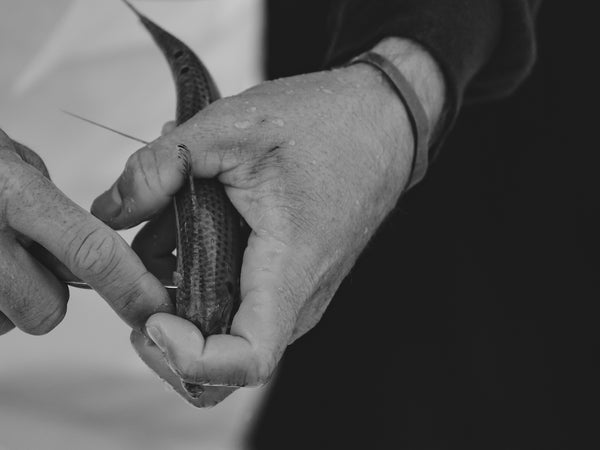 To bait and wait or cast and catch? It’s kind of like that old saying “Fish or Cut Bait” — it’s all about knowing when to use bait and when to throw artificial lures.
To bait and wait or cast and catch? It’s kind of like that old saying “Fish or Cut Bait” — it’s all about knowing when to use bait and when to throw artificial lures.
LURES – One of the greatest rewards in fishing is being able to fool a fish into hitting a piece of plastic. Artificials such as plugs, poppers, jigs, metals and soft baits are designed to mimic many of the baitfish species predators feed upon. The key in choosing the right lure is to “match the hatch” and pick the right offering that has the same flash, vibration, profile of the baitfish the target species is feeding upon. Lures are generally used when fish are feeding aggressively, but can also be utilized to cajole a bite out of a lazy fish as the angler controls the presentation to elicit strikes and can make the lure even look livelier and more enticing than actual bait. Lures allow you to adjust and be in control of selection to adapt to water color, temperature and presentation. Some baits like Berkeley Gulp! go as far as to cheat a bit and entertain scent infusion. Overall, it may seem ridiculous that human beings can get so riled up about fooling a fish, but tricking a fish on a lure is a challenge with serious rewards—just ask anyone who has seen a largemouth bass or jack crevalle crush a topwater popper.
 LIVE BAIT – The mantra “Live bait works best” is definitely rooted in truth. Both live and dead bait brings about everything fish desire - the smell, color, taste and profile is the real deal. Freshwater baits consist of shiners, fathead minnows, nightcrawlers, mealworms and salmon eggs. Saltwater type baits can be anything from fresh clams to ballyhoo, even small tuna. About the only issue is keeping live bait live and fresh bait fresh as it may require some effort for upkeep in a livewell, bait bucket with a bubbler, or stored in cold climate of a fridge. The true key to bait fishing is knowing what bait to throw to match the hatch of what specific creature fish are feeding upon i.e. don’t throw eels when stripers are feeding on a cinder worm hatch. Understand what fish are feeding on at any given time of day during the year as it switches up as the seasons shift. Bait fishing requires more patience, thus the saying “bait and wait”, but it’s an extremely effective endeavor and is the best way to get someone introduced to the sport as your odds of success are greater with minimal amount of true effort or skill, which is usually needed when working a lure.
LIVE BAIT – The mantra “Live bait works best” is definitely rooted in truth. Both live and dead bait brings about everything fish desire - the smell, color, taste and profile is the real deal. Freshwater baits consist of shiners, fathead minnows, nightcrawlers, mealworms and salmon eggs. Saltwater type baits can be anything from fresh clams to ballyhoo, even small tuna. About the only issue is keeping live bait live and fresh bait fresh as it may require some effort for upkeep in a livewell, bait bucket with a bubbler, or stored in cold climate of a fridge. The true key to bait fishing is knowing what bait to throw to match the hatch of what specific creature fish are feeding upon i.e. don’t throw eels when stripers are feeding on a cinder worm hatch. Understand what fish are feeding on at any given time of day during the year as it switches up as the seasons shift. Bait fishing requires more patience, thus the saying “bait and wait”, but it’s an extremely effective endeavor and is the best way to get someone introduced to the sport as your odds of success are greater with minimal amount of true effort or skill, which is usually needed when working a lure.
Bait fishing or lure fishing, you can’t go wrong with either method. Get an understanding of your goals when heading out to fish and pick your approach accordingly.
- NICK HONACHEFSKY







